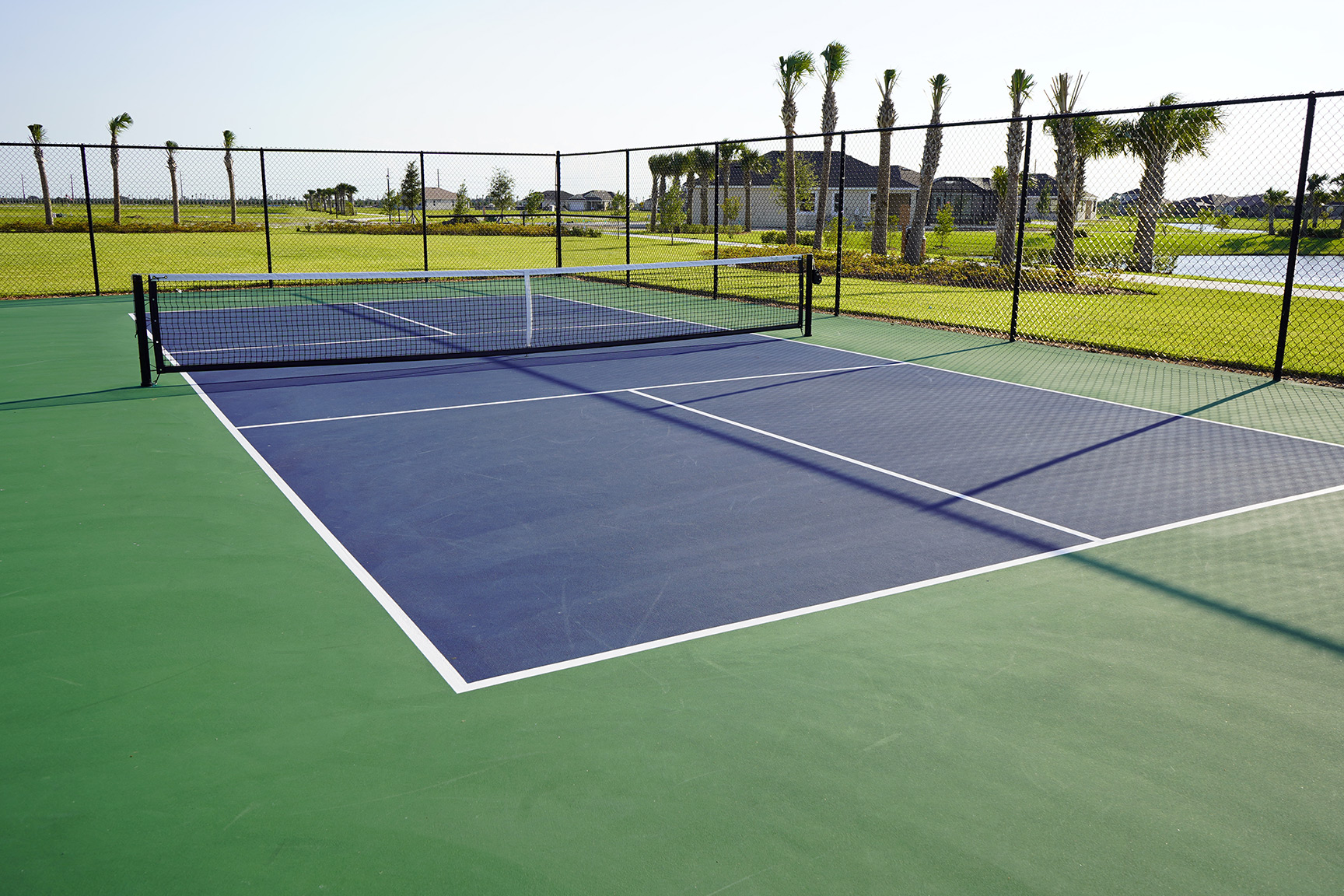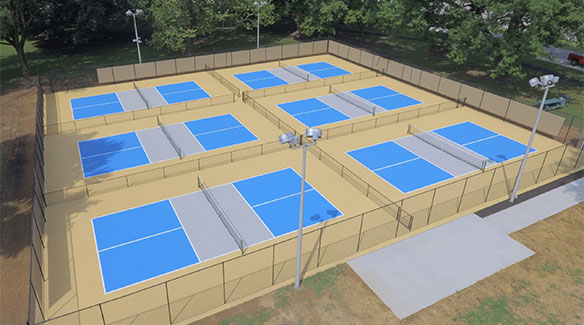The Ultimate Guide to Preparation Your Pickleball Court Construction Project
The Ultimate Guide to Preparation Your Pickleball Court Construction Project
Blog Article
Boost Citizen Interaction With Community-Driven Pickleball Court Projects
The appearance of community-driven pickleball court projects presents a special possibility to cultivate neighborhood engagement and strengthen neighborhood ties. The genuine inquiry continues to be: just how can these grassroots initiatives be purposefully applied to ensure sustainability and inclusivity in diverse communities?
Significance of Community Interaction
Neighborhood interaction is a crucial element in the successful development of pickleball court projects, as it fosters a sense of possession and cumulative duty amongst homeowners. When area participants are proactively entailed in the preparation and application stages, they are most likely to advocate for the project's lasting success. Involving stakeholders such as regional players, households, and recreational groups guarantees that the facilities fulfill the varied requirements and preferences of the community.
Furthermore, community engagement grows an encouraging setting where citizens really feel empowered to contribute their sources and concepts. Pickleball court construction. This collective approach can bring about cutting-edge options that enhance the design and capability of the courts, making them a lot more appealing to a bigger target market. Additionally, involving citizens in decision-making processes can reinforce social ties, advertising inclusivity and unity within the neighborhood
The visibility of area assistance for a pickleball job can also play a pivotal function in securing financing and approval from regional authorities. By demonstrating a common commitment to leisure development, neighborhoods can effectively support for resources and plan changes that favor the facility of pickleball courts, eventually improving the local culture and recreational landscape.
Actions to Initiate a Job
Launching a pickleball court job calls for a methodical technique that builds on the structure of area engagement developed in previous conversations. The initial step is to construct a project board consisting of local stakeholders, lovers, and reps from pertinent organizations. This diverse team ensures that multiple point of views are taken into consideration.
Next, carry out a demands analysis within the community. Surveys, focus groups, and public conferences can be reliable in determining interest and event input on prospective court places, wanted amenities, and scheduling preferences. Following this, establish a job plan detailing timelines, duties, and purposes.
When the strategy remains in place, involve with neighborhood authorities to recognize zoning laws and any kind of required licenses. Connecting transparently with the community throughout this procedure is essential, as it cultivates trust and encourages further participation.
Additionally, organizing community occasions can aid keep momentum and enthusiasm. These events can act as systems for additional discussion and help to strengthen area connections. Finally, file every step taken and keep comprehensive records, as this will certainly be advantageous for future stages of the task, including funding and source purchase.
Funding and Resources Available
Safeguarding funding and sources for a pickleball court job is typically a vital step that can establish the job's usefulness and success. Different avenues exist for getting monetary assistance, varying from public funding to exclusive sponsorships. City government gives, frequently targeted at promoting area health and leisure, can offer significant sponsorship for such initiatives.
Along with government sources, nonprofit companies and foundations often offer grants especially for sports and neighborhood growth jobs. Involving local companies as enrollers can also be a worthwhile strategy; lots of firms aspire to purchase neighborhood campaigns that boost their corporate social duty profile.
Crowdfunding systems have arised as a feasible choice for grassroots fundraising, allowing area participants to add straight to the task. This approach not only raises funds but also fosters a sense of ownership amongst participants.
Design and Planning Considerations
Effective layout and preparation are basic parts of any kind of effective pickleball court task adhering to the procurement of financing and resources. A complete analysis of the suggested place is necessary; this consists of examining availability, distance to existing neighborhood facilities, and the potential for visibility and involvement.
The format blog of the court need to abide by official size requirements while taking into consideration the bordering atmosphere. Incorporating features such as seats, color frameworks, and suitable lighting can significantly enhance gamer experience and viewer pleasure. Products selected for the court surface area need to focus on toughness and safety and security, with choices like acrylic or asphalt offering optimal efficiency.
Entailing area members in the design procedure fosters a feeling of possession and guarantees that the you can find out more facility satisfies local requirements - Pickleball court construction. This can be achieved via public examinations and studies, enabling stakeholders to share their choices and issues
Sustainability needs to also be a concern; integrating environment-friendly materials and practices can add to long-term feasibility. Creating a maintenance strategy to make certain the court remains in exceptional problem will support recurring community interaction and involvement in pickleball tasks.

Success Stories and Study
Highlighting the transformative impact of community-driven campaigns, a number of success stories highlight exactly how collaborative initiatives have caused the advancement of vibrant pickleball courts throughout various areas. One noteworthy instance is the effort in a town in Florida, where residents grouped together to transform an underutilized tennis court into a committed pickleball facility. Via fundraising events and collaborations with local organizations, the community elevated sufficient funds to set up new internet, resurfacing, and lines, inevitably promoting a dynamic hub for regional gamers.
Similarly, in a suburb of The golden state, a grassroots activity emerged to produce pickleball courts in a neighborhood park. The job not just engaged volunteers for building yet also included workshops to involve area members in view publisher site the sport. Therefore, the courts became a prime focus for social communication and physical fitness, bring in gamers of all ages.
These study exemplify how community-driven jobs can boost neighborhood interaction, advertise physical activity, and reinforce social bonds. By leveraging collective resources and interest, areas can efficiently create and sustain pickleball centers that offer varied populaces and foster a sense of belonging.

Conclusion
By focusing on stakeholder participation throughout the preparation and implementation phases, these efforts can properly address diverse neighborhood requirements. Inevitably, such initiatives add to the transformation of public spaces into dynamic facilities of health and fitness and social communication, reinforcing community ties.
The development of community-driven pickleball court jobs provides a special possibility to cultivate neighborhood involvement and reinforce area connections.Area involvement is an important aspect in the successful advancement of pickleball court jobs, as it promotes a sense of ownership and collective duty amongst homeowners. When area participants are actively included in the planning and implementation phases, they are extra most likely to support for the job's long-term success.Starting a pickleball court job needs an organized method that develops on the foundation of community engagement developed in previous conversations. The job not only engaged volunteers for building and construction however likewise included workshops to involve neighborhood members in the sporting activity.
Report this page